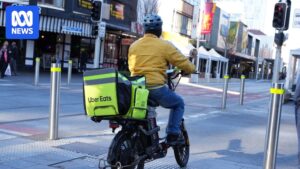
Imaging data from Japan’s Himawari-8 and -9 meteorological satellites have been successfully utilized to monitor temporal changes in Venus’ cloud-top temperature, revealing previously unseen patterns in the temperature structure of various atmospheric waves. This breakthrough, led by a team from the University of Tokyo, highlights the potential of meteorological satellites in enhancing our understanding of Venusian atmospheric dynamics.
The research team, spearheaded by visiting researcher Gaku Nishiyama, compiled infrared images from 2015 to 2025 to estimate brightness temperatures over both daily and yearly scales. The findings demonstrate that these satellites can serve as additional observational tools, complementing future planetary missions and ground-based telescopes.
Himawari Satellites: A New Lens on Venus
The Himawari-8 and -9 satellites, launched in 2014 and 2016 respectively, were initially developed to monitor global atmospheric phenomena using their multispectral Advanced Himawari Imagers (AHIs). Nishiyama’s team recognized the potential of these cutting-edge sensors for spaceborne observations of Venus, which is occasionally captured by the AHIs near the Earth’s rim.
Understanding the temporal temperature variations in Venus’ cloud tops is crucial for studying its atmospheric dynamics, including thermal tides and planetary-scale waves. However, obtaining consistent data has been challenging.
“The atmosphere of Venus has been known to exhibit year-scale variations in reflectance and wind speed; however, no planetary mission has succeeded in continuous observation for longer than 10 years due to their mission lifetimes,” Nishiyama explained.
Ground-based observations also face limitations due to Earth’s atmosphere and daylight interference.
Filling the Observation Gap
Meteorological satellites like Himawari-8 and -9, with their longer mission lifetimes (scheduled for operation until 2029), are well-suited to bridge this observational gap. The AHIs provide multiband infrared coverage, essential for retrieving temperature data from different altitudes, along with low-noise and frequent observations. This capability allows for a comprehensive analysis of Venusian atmospheric dynamics.
The team established a data archive by extracting all Venus images from the AHI datasets, identifying 437 occurrences. Despite the small apparent size of Venus in the images, they successfully tracked temporal variations in cloud-top temperature during optimal alignments of the geostationary satellite, Venus, and Earth.
Analyzing Atmospheric Dynamics
The retrieved brightness temperature variations were analyzed on both yearly and daily scales, revealing variability in thermal tides and planetary-scale waves. The study confirmed changes in the amplitude of these phenomena, with planetary wave amplitudes decreasing with altitude. While the limited temporal resolution of the AHI data posed challenges, the variations in thermal tide amplitude appeared linked to decadal changes in Venus’ atmospheric structure.
Temperature changes on Venus were measured over multiple infrared bands, showcasing temporal variations across the observation period.
Implications and Future Prospects
Beyond Venus, Nishiyama envisions broader applications for this novel approach.
“I think that our novel approach in this study successfully opened a new avenue for long-term and multiband monitoring of solar system bodies. This includes the moon and Mercury, which I also study at present,” he stated.
The ability to access a range of geometric conditions untethered from ground-based limitations is a promising development for planetary science.
Looking ahead, this study could enable scientists to assess the physical and compositional properties of various celestial bodies, enhancing our understanding of planetary evolution. With no other spacecraft expected to orbit Venus until the next planetary missions around 2030, the Himawari satellites provide a critical observational advantage.
The findings not only demonstrate the potential of meteorological satellites in planetary science but also highlight the importance of innovative approaches in expanding our knowledge of the solar system.






